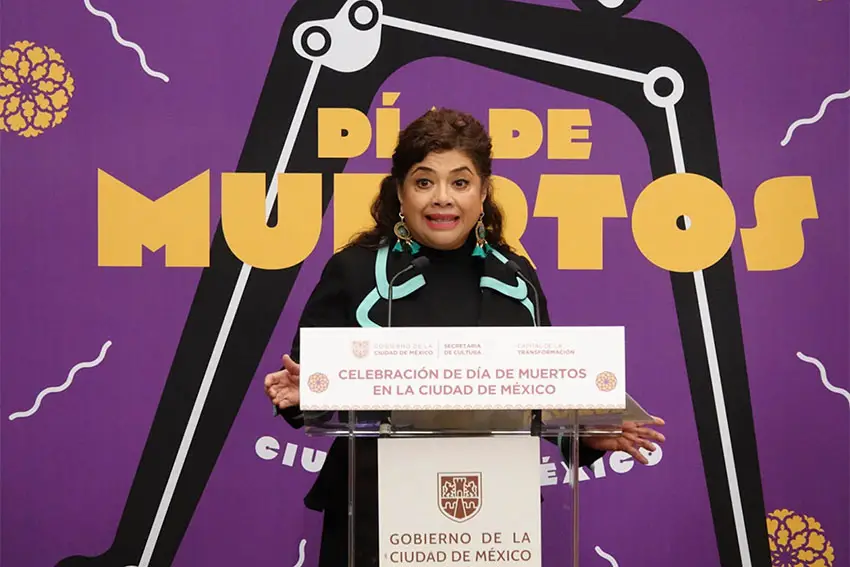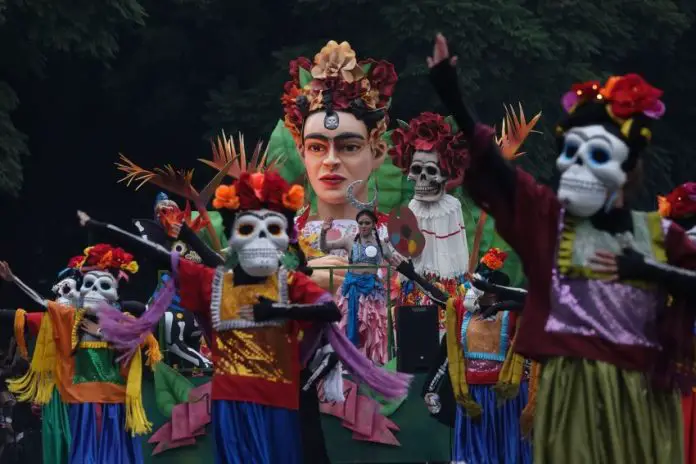Mexico City has released the date of one of its most anticipated cultural events each year: the Day of the Dead parade.
Scheduled for Nov. 2, at 2 p.m., the parade will depart from Mexico City’s Puerta de los Leones — the main gate to Chapultepec Park — and travel along major city streets, including Paseo de la Reforma, Avenida Juárez and 5 de Mayo, before finally arriving at the capital’s main square, the Zócalo.

At least 5,800 people will participate, divided into 37 groups — featuring seven floats and 16 musical groups. Three floats will pay tribute to prominent Mexicans, including writer and journalist Rosario Castellanos, singer Lucha Reyes and painter David Alfaro Siqueiros.
Throughout the parade route, attendees will be able to admire monumental alebrijes — artisanal sculptures of fanciful creatures — on public display along Paseo de la Reforma, from the Angel of Independence to the Estela de Luz monument. The sculptures will remain on display until Nov. 3.
A gigantic Day of the Dead altar, known in Mexico as an ofrenda, will also be showcased at the Zócalo esplanade from Oct. 30 to Nov. 3. The altar will stand an impressive 17 meters tall and feature a pool covering over 200 square meters.
The altar will also feature 21 cardboard figures, ranging between 6 to 10 meters tall; two monumental trajineras (the traditional decorated boats that the Xochimilco borough is known for), and a chinampa (a pond covered with soil). It will also feature a garden of 10,000 cempasúchil, or Mexican marigold, flowers sourced from Xochimilco farmers.
According to CDMX’s Minister of Culture Ana Francis López, 2005 was the first year there was a larger-than-life ofrenda (often referred to as a megaofrenda) displayed at the Zócalo. Since then, traditional Mexican cartonería (papier-mâché) artists have participated every year in the altar’s design. Last year, the megaofrenda drew over 1 million spectators to the Zócalo.
Mexico City Mayor Clara Brugada said that Day of the Dead parade and other related festivities in the capital are expected to draw 7 million people and earn over 2 billion pesos (US $100 million) in consumer spending. Mexico City Tourism Minster Alejandra Frausto said that, so far, hotel occupancy for Day of the Dead weekend is at 80% capacity – 10% more than in 2023.
Day of the Dead, or Día de Muertos (not Día de los Muertos), follows the pre-Columbian Indigenous belief that the dead temporarily return to Earth between Nov. 1 and 2. Preparations for this holiday begin in October with the placement of an altar to dead loved ones in people’s homes. The altar is decorated with flowers, fruit, the seasonal pan de muerto bread, salt, cempasúchil flowers, colorful confetti and the deceased’s favorite treats and dishes.
In 2003, UNESCO placed Day of the Dead on its List of Intangible Cultural Heritage, which recognizes traditional cultural practices around the world as important to preserve.
With reports from El Universal, Forbes and El Financiero
